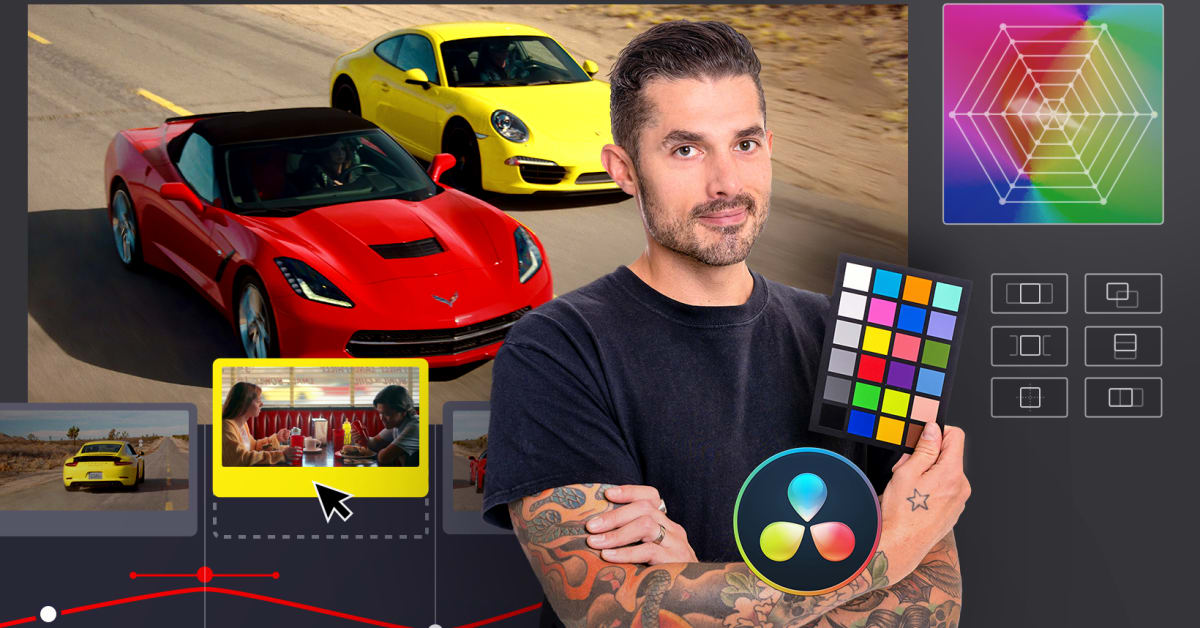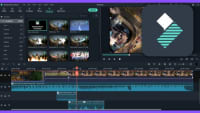Description
In this course, you will learn:
- Begin by meeting your instructor and learning about colour grading's concepts and purposes.
- Learn how to prepare your video material for colouring by exploring the DaVinci Resolve interface.
- Then, learn how to use the various tools to begin balancing and correcting colour.
- Learn how to use scopes and levels to measure and compare modifications to match footage between multiple shoots.
- Learn how to use secondary controls like keys, power windows, curves, and keyframes to make accurate colour modifications.
- Learn how to use the Qualifier tool to make edits to particular parts of an image.
- Learn Alex's preferred approaches for creating a unique stylized appearance in your video. Explore LUTs and learn how to use scopes to dissect and mimic real-world effects.
- Finally, learn how to share your video footage with your clients by exporting it. Learn how to backup a project and database in DaVinci Resolve, as well as how to avoid difficulties with third-party software.
Syllabus:
-
Course 1: Preparing Your Project
-
Why Do We Colour Grade?
-
Opening Davinci Resolve for the First Time
-
Exporting Your Film from Premiere
-
Importing Footage with XML or Flattened QT
-
Finding Still Images as References
-
Log and Raw Terminology
-
Exploring Nodes
-
Playback Speed and Creating Caches
-
Practice: Preparing Our Media for Grading
-
-
Course 2: Primary Color Correction
-
Primary Controls
-
Learning to Use Scopes
-
First Correction - Changing Levels
-
Second Correction - Changing Colour
-
Matching Colour and Contrast between Shots
-
Giving Your Film a Feel
-
Practice: Balancing Then Giving Shots Feeling
-
-
Course 3: Secondary Color Correction
-
Meaning of Secondaries and Using the Qualifier
-
Power Windows and Drawing Shapes
-
Tracking with Power Windows
-
Curves as Secondaries
-
Parallel vs Serial Nodes, and Alpha Channels
-
Using Keyframes
-
Practice: Keys, Trackers, and Keyframes
-
-
Course 4: Creating a Look
-
Luts
-
Easy Teal and Orange Split Tone Look
-
Bleach Bypass Look
-
Cross Processed Look
-
Low Contrast Vintage Film Look
-
Assessing and Recreating Looks from TV
-
Using Colour Theory in Your Work
-
Practice: Experimenting with Creative Looks
-
-
Course 5: Organization and Efficiency
-
Remote Grades, Groups, and Colourtrace
-
Organizing the Node Tree
-
Useful Terms
-
Grading Control Surfaces
-
Practice: Being More Efficient
-
-
Course 6: Delivering a Graded Film
-
Delivery Interface and Exporting
-
Exporting with Handles to Return to Premiere
-
Export Colours and Why They Change
-
Databases and Project Archiving
-
Practice: Exporting Our Work
-







